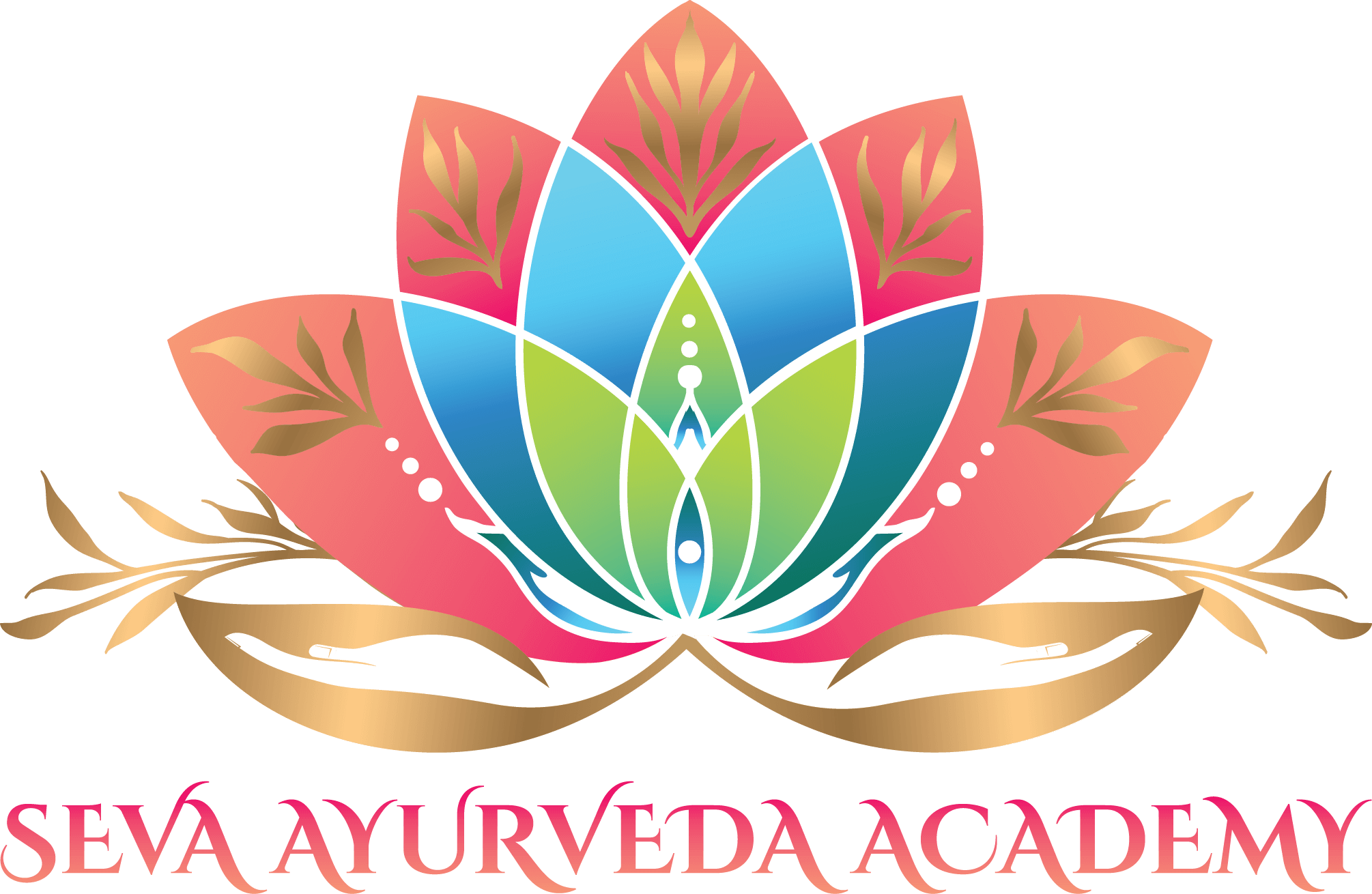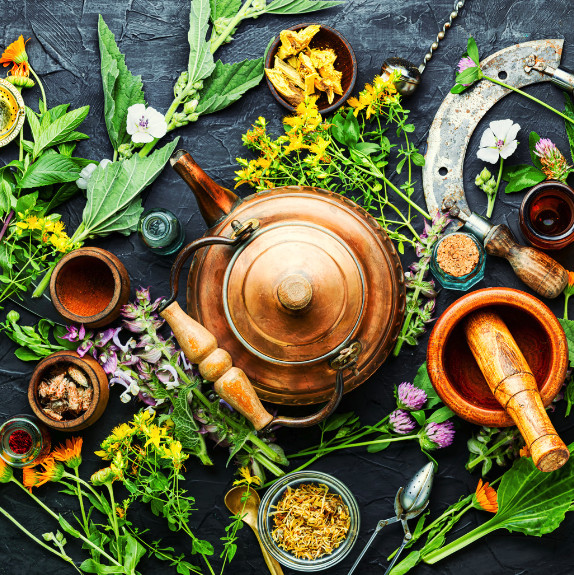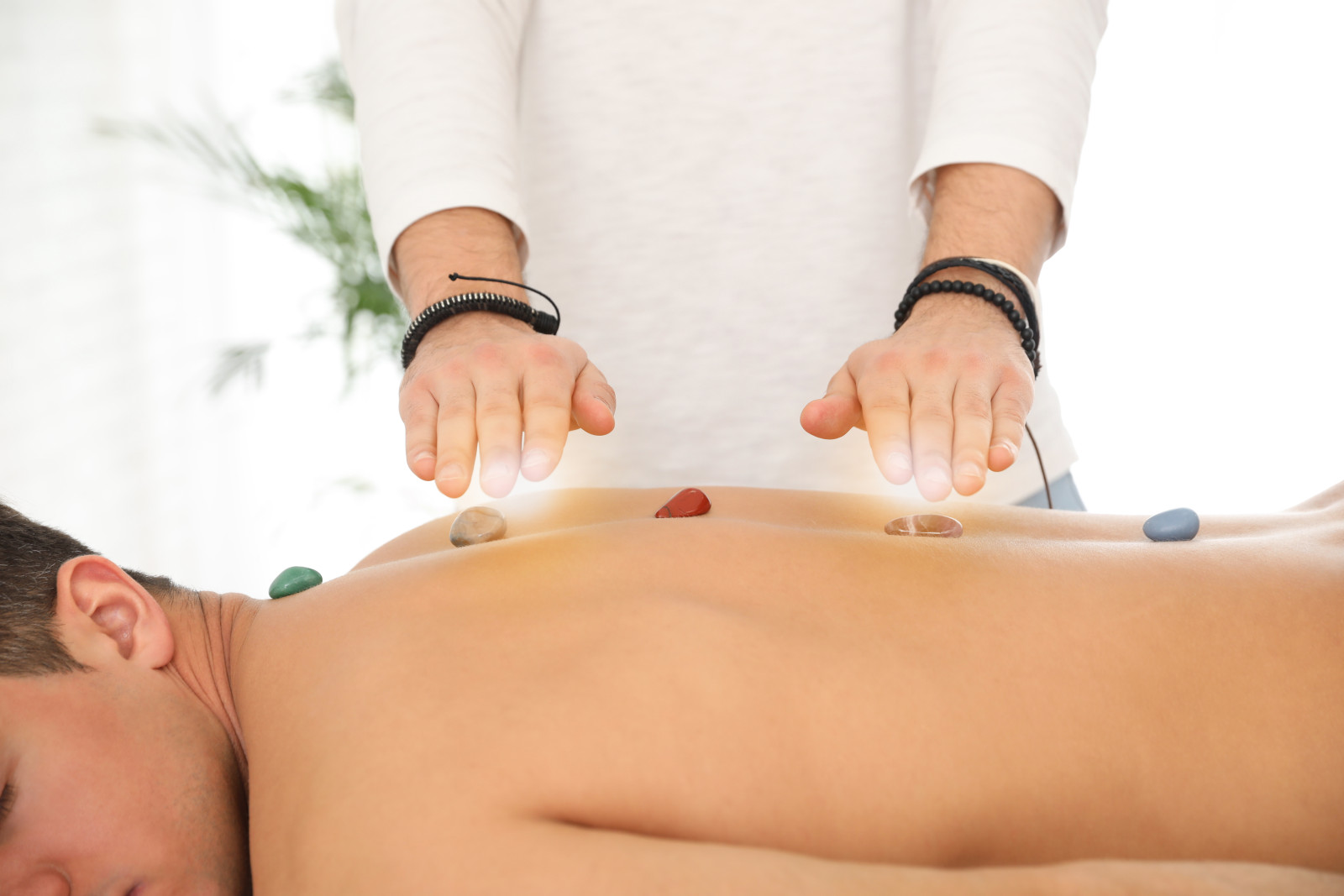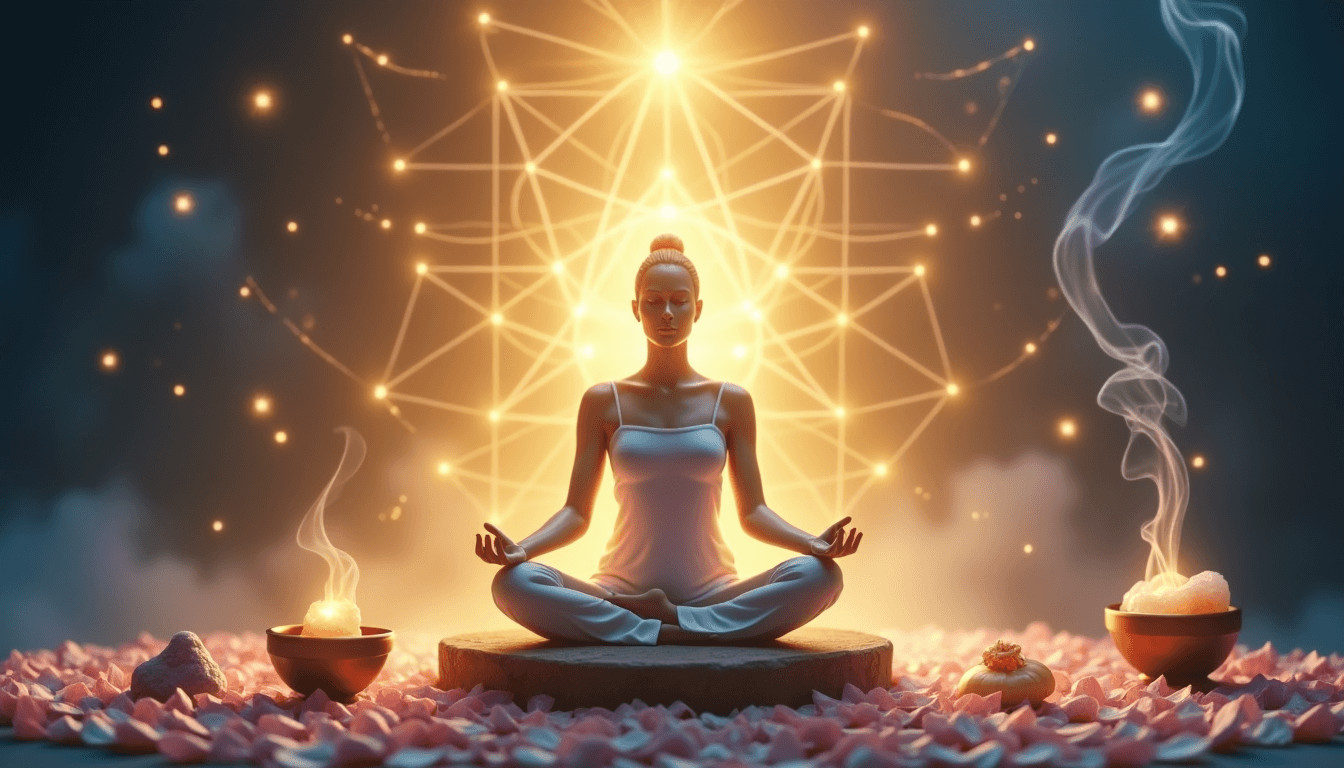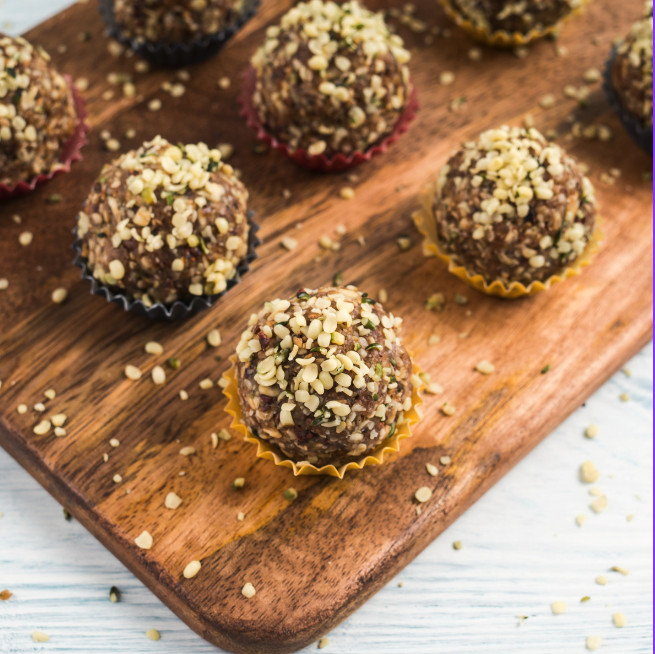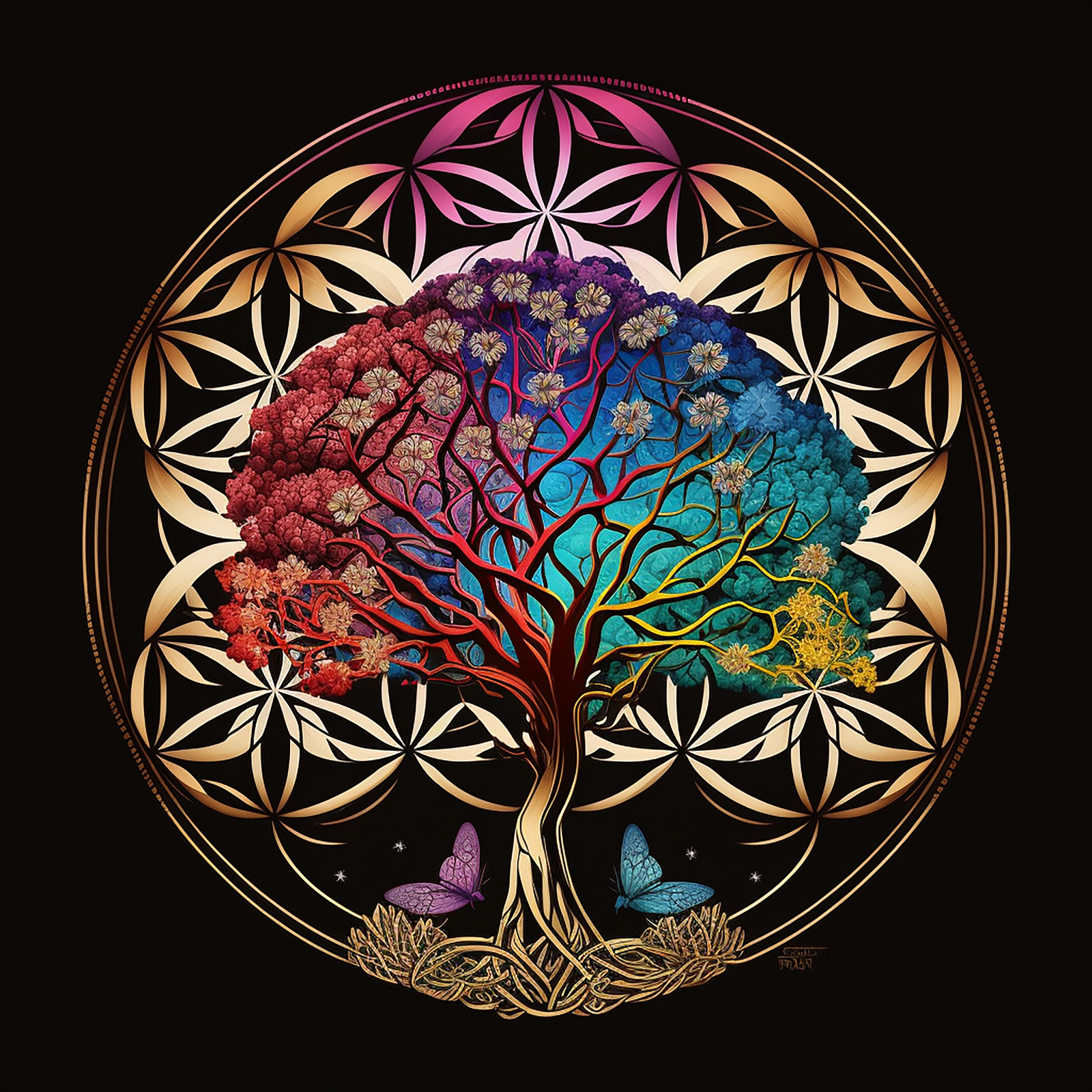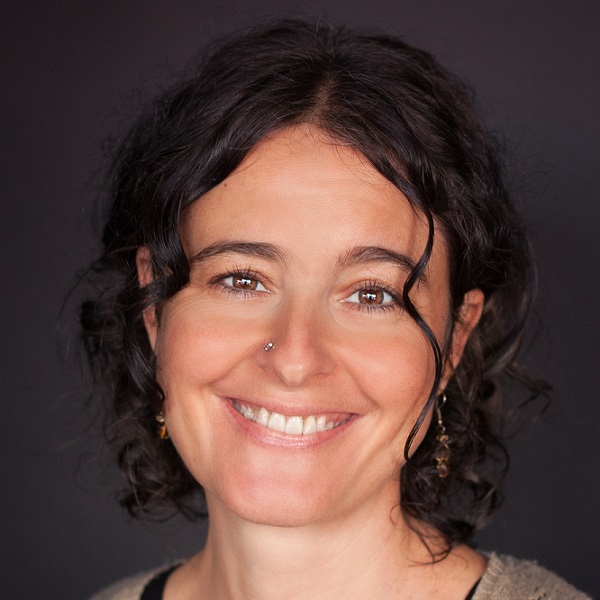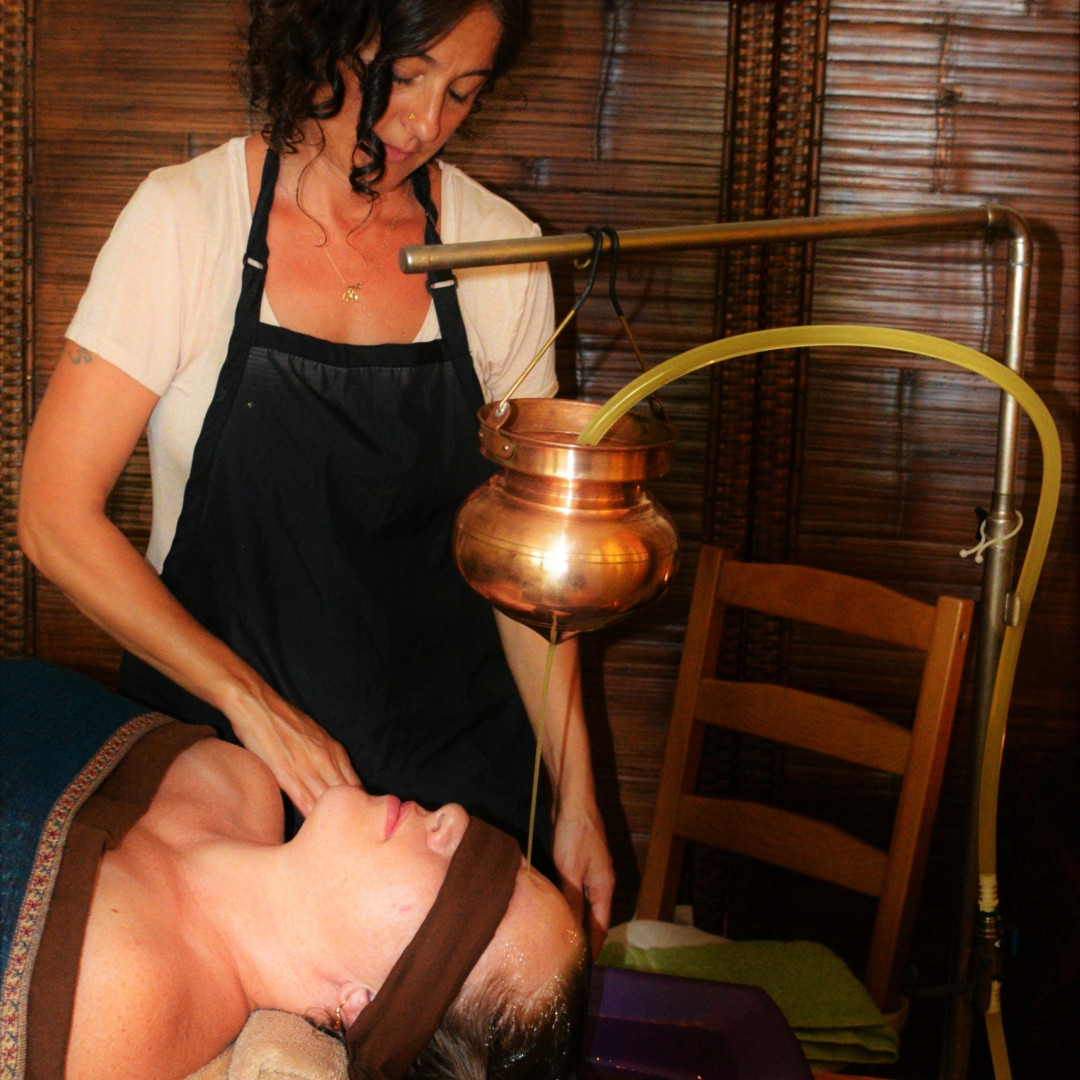
Shirodhara is an ancient Ayurvedic therapy that profoundly impacts the nervous system by calming and cleansing the mind, providing relief from anxiety, stress, fatigue, and hypertension. By pouring a stream of warm liquid over the head, this treatment also addresses insomnia, jet lag, and mood regulation while promoting relaxation and cognitive clarity. Additionally, Shirodhara nourishes the hair and scalp, enhances spiritual progress, and boosts overall immunity by balancing the body’s doshas.
This therapeutic practice is recommended for a wide range of conditions including PTSD and hormonal imbalances, yet it is not suitable for everyone; contraindications include obesity, recent neck injuries, and various acute illnesses. Typically administered over 30 to 45 minutes for 7 to 14 days, the treatment’s duration is tailored based on individual dosha imbalances or practitioner recommendations. Those considering Shirodhara should prepare for a tranquil post-treatment environment, refrain from heavy meals, and allow the therapeutic oils to remain in the hair to maximize its effects.
Participants should come prepared by wearing old, comfortable clothing and bringing head coverings if needed for post-appointment exposure to cooler climates. While the therapy is open to many, it is important to consult with a professional to ensure suitability given personal health conditions. Embracing Shirodhara can lead to profound physical, energetic, and spiritual rejuvenation, offering a natural approach to achieving balance and well-being.
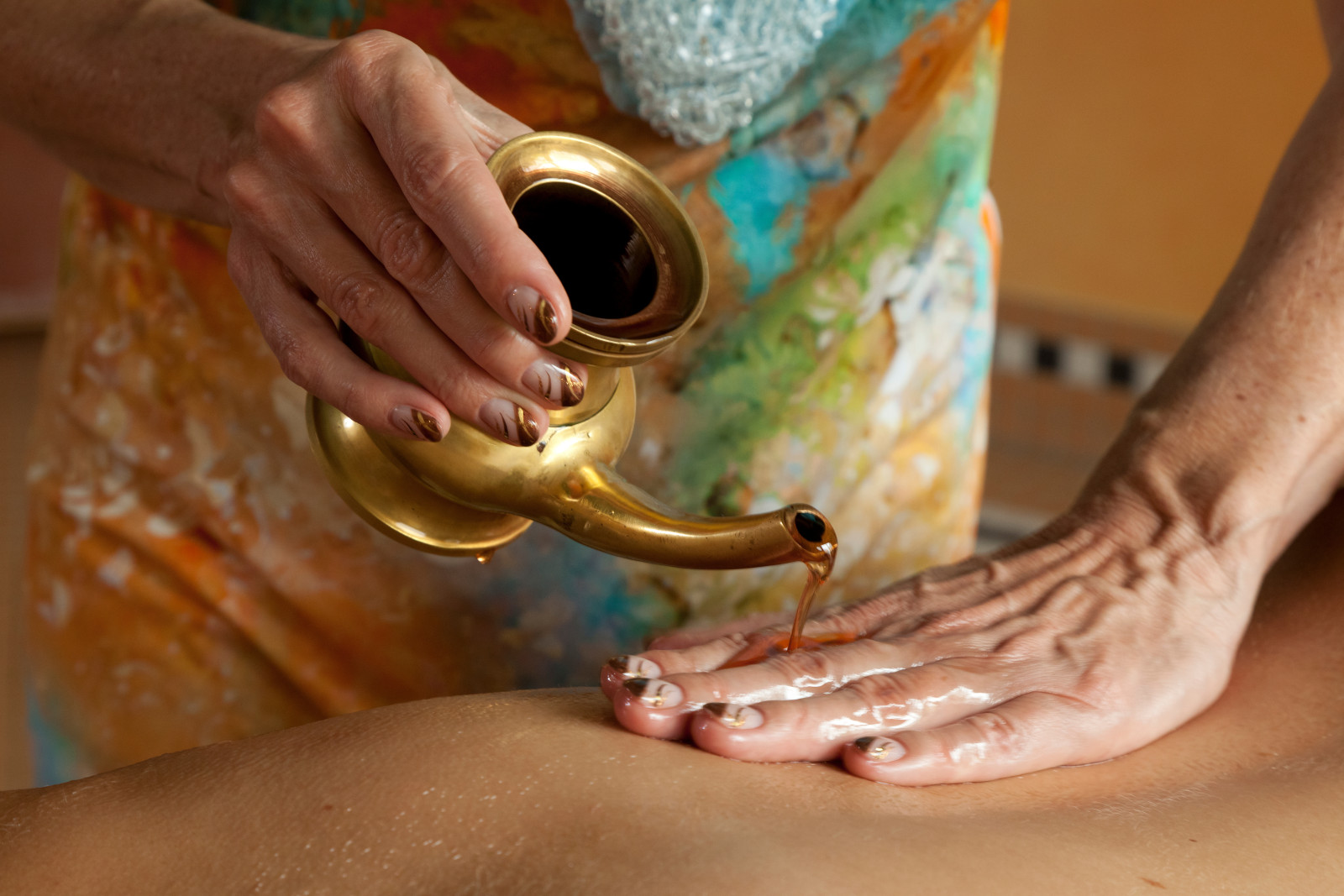
What is Abhyanga?
Abhyanga, also known as abhyangam in some regions, is a form of warm oil massage that arouses a feeling of being wrapped in loving arms. This self-care ritual emulates warmth and makes a powerful difference in your feelings about yourself and everything around you. The abundant coating of warm oil lovingly replaces anxieties with a sense of calmness and contentment, as the oils are warm, stable, and grounding. Abhyanga is often considered a key component of ayurveda full body massage techniques.
Abhyanga Benefits
The benefits of abhyanga extend far beyond relaxation. This ayurvedic full body massage offers numerous advantages for both physical and mental well-being:
- Detoxification: The purpose of the oil used in abhyanga oil massage is to penetrate deep tissue layers, binding to toxins for elimination.
- Joint Lubrication: The massage provides nourishment and moisture to joints, improving flexibility.
- Weight Management: Regular abhyanga can act as a fat burner, supporting weight loss programs without side effects.
- Improved Circulation: The specific sequence of massaging the body in sections facilitates proper blood flow, lymphatic drainage, and may even help regulate blood pressure.
- Stress Relief: Abhyanga stimulates the parasympathetic nervous system, promoting relaxation and reducing stress.
- Skin Health: The hydration and lubrication from abhyanga increase the skin's resistance to dryness, cracking, and bruising.
- Anti-Aging: Regular practice helps the skin adapt to the aging process more gracefully.
- Energy Flow: Abhyanga is believed to enhance the body's energy flow, promoting overall vitality.
Abhyanga Massage Procedure
The abhyanga treatment involves a specific sequence of massage strokes applied to the body part by part. This methodical approach encourages the quick removal of metabolic wastes through improved circulation and lymphatic drainage. The massage is given with varying pressures to stimulate different layers of tissue.
In India, it's common to receive an abhyanga with two therapists performing a choreographed 4-handed tandem massage. This unique experience in Ayurvedic massage allows both sides of your body to be massaged simultaneously. The practice of ayurvedische abhyanga has its roots in ancient Indian healing traditions.
The Role of Herbal Oils in Abhyanga
Abhyanga often uses medicated or herbal oils, which play a crucial role in its therapeutic effects. These oils are chosen based on your dosha (body constitution) - vata, pitta, or kapha. Common oils used include:
- Sesame oil: Particularly beneficial for vata dosha
- Coconut oil: Cooling and soothing, ideal for pitta dosha
- Sunflower oil: Light and nourishing, suitable for kapha dosha
Self Abhyanga: A Daily Practice for Holistic Health
While receiving abhyanga from an Ayurvedic practitioner can be a transformative experience, incorporating ayurvedic self massage or self-massage into your daily routine can provide ongoing benefits. This self-massage technique allows you to maintain balance in your doshas and promote overall well-being.
To practice self abhyanga:
- Choose an appropriate oil based on your dosha.
- Warm the oil slightly for a more soothing experience.
- Begin with gentle, circular motions on your scalp.
- Move down your body, using long strokes on limbs and circular motions on joints.
- Pay special attention to areas that feel tense or painful.
- Allow the oil to absorb for 10-15 minutes before showering.
Regular practice of self abhyanga can lead to sleep improvement, enhance skin health, boost the immune system, and provide daily stress relief. It's an essential aspect of ayurvedic self massage that can easily be incorporated into your daily routine.
Contraindications for Ayurvedic Massage
While abhyanga offers numerous benefits, it should not be performed under certain conditions:
- Fever
- Acute illness (unless permitted by your doctor)
- Blood clots (like deep vein thrombosis) or bleeding disorders
- Hangover
- Dehydration
- During chemotherapy
- During Menstruation
Always consult with an Ayurvedic practitioner or healthcare provider before starting any new wellness routine, especially if you have pre-existing health conditions.
Conclusion
Abhyanga, as a key practice in Ayurveda, offers a holistic approach to health and well-being. By incorporating this warm oil massage into your self-care ritual, you can experience the myriad benefits of this ancient traditional medicine. Whether you choose to receive abhyanga from a trained Ayurvedic practitioner or practice self abhyanga at home, you're taking a significant step towards balanced health and inner harmony.
It's worth noting that abhyanga is often part of a larger Ayurvedic treatment plan known as panchakarma, which involves various detoxification and rejuvenation therapies. The combination of these practices can lead to profound improvements in overall health and vitality.
Interested in learning more about the Ayurvedic Healing Arts? Learn More
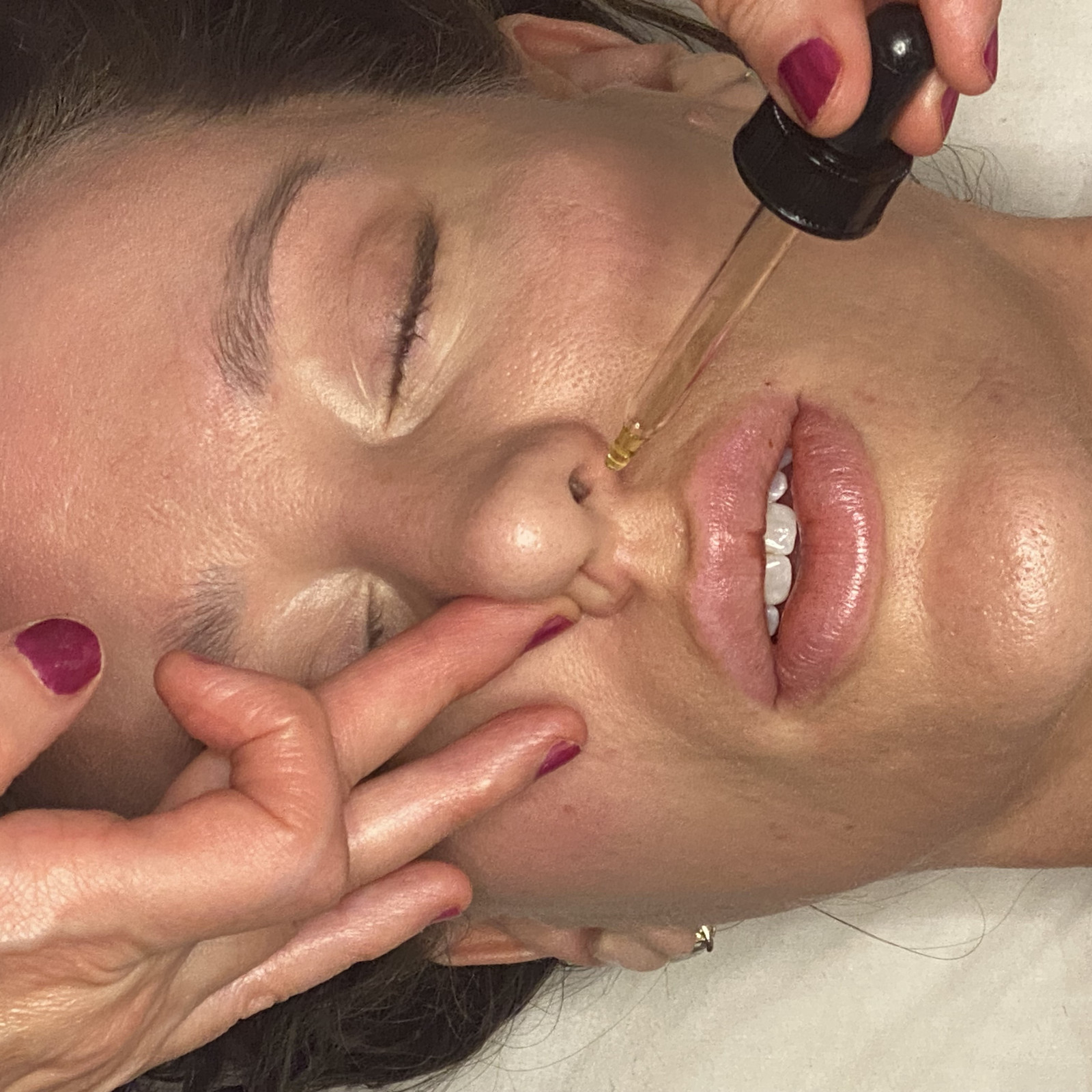
Nasya, an Ayurvedic practice involving the administration of herbal or non-herbal oils through the nasal route, offers numerous benefits by bypassing the liver's first-pass effect and gastrointestinal metabolism. It allows for rapid absorption and direct access to the central nervous system, thus enabling quick therapeutic effects and high bioavailability. The nasal mucosa serves as a vital connection to the brain, promoting mental clarity, emotional stability, and overall balance by directly interacting with sub-doshas like prana vayu, sadhaka pitta, and tarpaka kapha.
Through the olfactory pathway, Nasya treatment helps clear sinus congestion, improve breath quality, and support neurological health. The practice particularly addresses imbalances above the clavicle bone, offering relief from tension in the head and neck area. By alleviating stress and clearing stagnation, Nasya encourages the free flow of prana, enhancing relaxation and preventing blockages.
In the context of global health concerns, traditional practices like Nasya underscore the importance of self-care and immune system support. Maintaining a warm, humid environment through means such as steam baths and humidifiers can fortify the nasal mucosa against respiratory viruses. Beyond Ayurvedic practices, engaging in activities like regulating breathing, enjoying warmth in moderation, and nurturing personal joy can profoundly bolster one’s health resilience.
Marma therapy, also known as marma chikitsa, is an integral aspect of Ayurveda, a traditional Indian medicine system that originated in India. The term "marma" refers to vital energy points on the body, which are considered access points to the body, mind, and consciousness. Marma meaning encompasses the concept of these sensitive or vulnerable areas that, when stimulated, can promote balance, healing, and overall wellbeing.
In Ayurveda, the human body is viewed as a network of energy channels known as "nadis," through which vital life force or "prana" flows. The intersection points of these nadis, where prana is most concentrated, are the marma points. There are a total of 107 marma points distributed throughout the body, each associated with specific organs, tissues, and bodily functions. This concept is similar to the chakra pressure points in other energy healing practices.
Marma therapy serves multiple purposes within the Ayurvedic system. It is used for both preventive and therapeutic purposes, aiming to maintain the balance of the three doshas (Vata, Pitta, and Kapha) and clear any blockages in the energy flow. By addressing imbalances at the energetic level, marma point massage contributes to the overall harmony of the body, mind, and spirit.
During an ayurvedic marma massage session, a trained practitioner applies gentle stimulation to specific marma points. The practitioner may use their hands, fingers, or special tools to activate these vital points, channeling healing energy and promoting the flow of prana. The choice of technique and the marma points of Ayurveda selected depend on the individual's constitution (Prakriti) and the specific health concerns (Vikriti). This approach is somewhat similar to acupuncture or acupressure, though it is unique to the Ayurvedic tradition.
Marma therapy is known for its diverse therapeutic applications. It is often used to alleviate physical discomfort, such as muscular tension, joint pain, or headaches. By addressing energetic imbalances, this healing practice can also have a positive impact on emotional wellbeing, promoting relaxation and reducing stress. Some practitioners even specialize in marma point scalp massage or focus on face marma points for specific benefits.
One of the key principles of marma treatment is its role in enhancing the body's self-healing mechanisms. By stimulating specific marma points, the therapy encourages the release of natural healing factors within the body. This makes marma therapy a valuable complement to other Ayurvedic treatments, such as Panchakarma, supporting the body's innate ability to restore balance.
The therapeutic effects of marma therapy extend beyond the physical body to impact the subtle energy fields. It is believed to influence the flow of "prana vayu," the life force energy responsible for various physiological and psychological functions. Through ayurvedic massage therapy, practitioners aim to balance and harmonize these energy currents, similar to how chakra massage points are used in other energy healing modalities.
In addition to its role in addressing existing health concerns, marma therapy is also utilized for preventive care. Regular sessions can help maintain overall balance and prevent the accumulation of imbalances that may lead to disease over time. By promoting the free flow of prana, marma therapy supports the body's natural resilience and resistance to imbalances.
It's essential to note that marma therapy should be performed by trained and experienced practitioners to ensure safety and effectiveness. The practitioner's knowledge of the specific marma points chart and their application is crucial for a successful therapy session. This expertise is rooted in ancient texts such as the Sushruta Samhita, as well as the teachings of renowned Ayurvedic physicians like Charaka and Vagbhata.
Marma therapy's holistic approach aligns with other traditional touch therapy practices, but its unique focus on the marmas sets it apart. The marma definition in Ayurveda describes these points as junctions of consciousness, making them powerful tools for healing on multiple levels. Some practitioners even integrate marma therapy with other modalities like Kalari, a martial art form that also recognizes the importance of vital points in the body.
In conclusion, marma therapy stands as a unique and valuable component of Ayurveda, offering a holistic approach to health and wellbeing by addressing the energetic foundations of the body. Through the skillful manipulation of marma points, this ancient healing practice contributes to the restoration and maintenance of balance, promoting optimal health on physical, mental, and spiritual levels. As interest in traditional and complementary therapies grows, marma therapy continues to gain recognition as a powerful tool for those seeking natural, holistic approaches to health and wellness.

